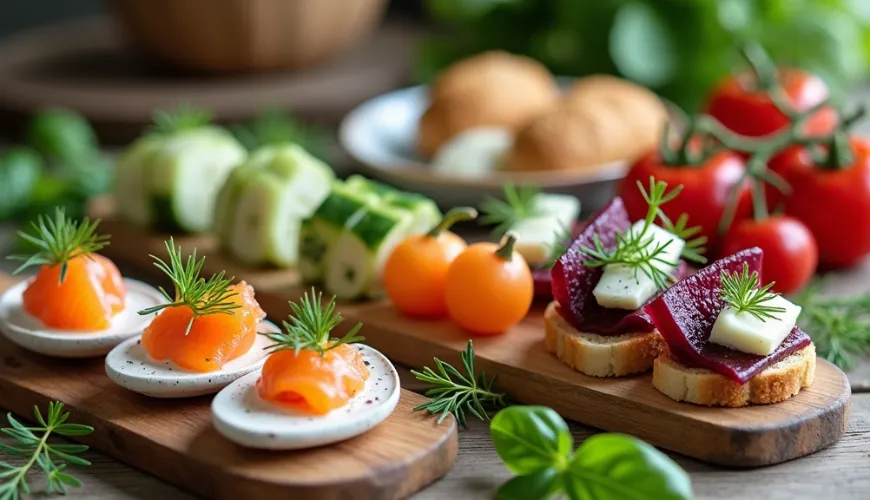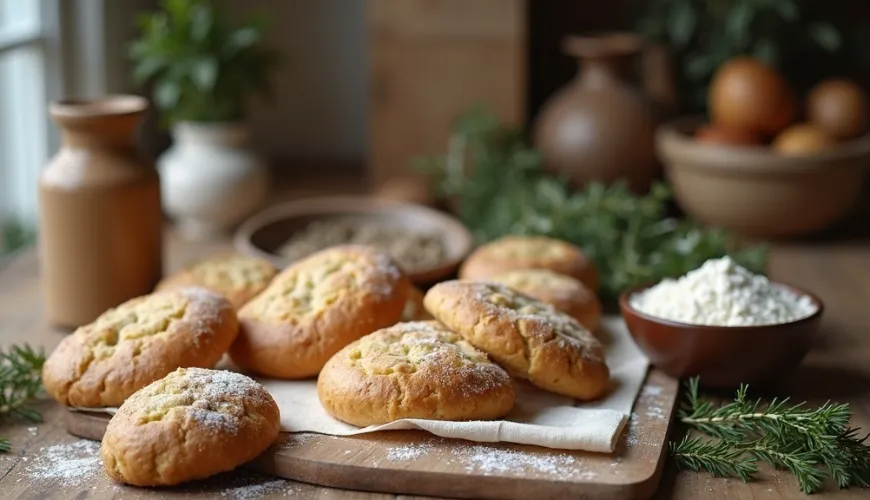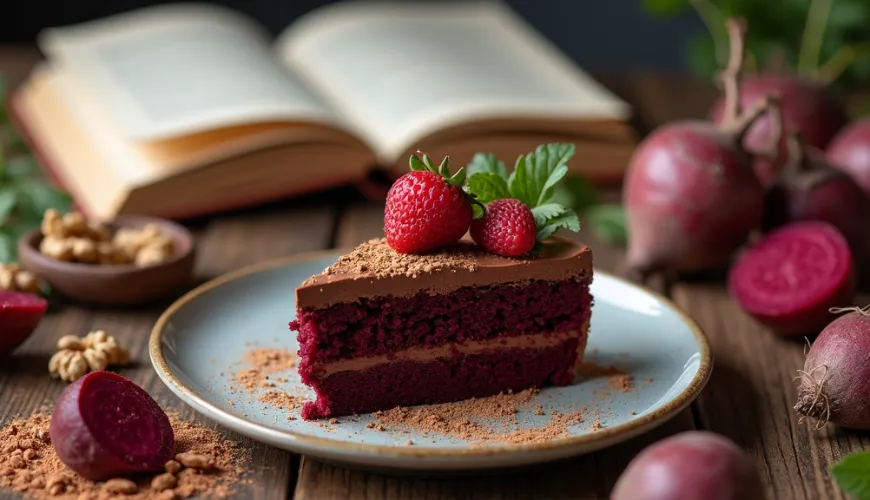
Discover the Magic of Amuse Bouche and Impress Your Guests

In the culinary world, where every detail counts and the dining experience begins even before the main course, we increasingly encounter the term amuse-bouche. This French term, which literally translates to "mouth amusement," refers to a small bite-sized appetizer served before a meal, often as a courtesy from the establishment or the chef. However, amuse-bouche is not just a small taste to warm up—it's a way for the chef to showcase their creativity, style, and ability to blend flavors. In modern gastronomy, amuse-bouche has become a symbol of haute cuisine, but its charm can be brought into the home setting as well.
What is amuse-bouche and why does it matter?
At first glance, it might look like just a small canapé or an appetizer spoon with something interesting on top. But amuse-bouche is not the same as classic canapés or tapas. While these small dishes can be part of a regular menu or refreshments, amuse-bouche has a specific purpose: to surprise, delight, and tune the guest's taste buds. It is a presentation of the chef's signature—what style they prefer, what ingredients they choose, what ideas they have.
In Michelin-starred restaurants, amuse-bouche can represent complex techniques like foams, emulsions, dehydration, or smoky aromas. Fortunately, at home, nothing like that is necessary—with minimal ingredients and a bit of creativity, you can create an impressive appetizer that will amaze any guest.
For example, in one family that loves festive dinners, an amuse-bouche with salmon marinated in citrus juice is served annually before the main course, presented on a spoon with a drop of herb oil and a borage flower. It takes no more than a few minutes to prepare, but the experience is unforgettable. Such a small detail sets the tone for an atmosphere of uniqueness and care, which is precisely what amuse-bouche signifies.
What are the best ingredients and flavor combinations?
Since amuse-bouche is truly a small dish—often just one bite—it's important for each component to play its role. Flavor balance, texture, and an element of surprise are keys to success. A combination of sour, salty, sweet, and umami can create harmony that unfolds in the mouth like a symphony.
Popular ingredients for homemade amuse-bouche include:
- Fresh herbs (dill, thyme, basil)
- Quality cheese (goat, parmesan, gorgonzola)
- Seasonal vegetables (beetroot, peas, pumpkin)
- Smoked salmon, caviar, or shrimp
- Fermented elements (pickled vegetables, kimchi)
- Fruit components (pomegranate, mango, apple)
Sometimes, just a slice of cucumber with a ball of goat cheese, a drop of honey, and a mint leaf is enough. Other times, amuse-bouche can be served as a mini soup in a small cup—perhaps a cold pea cream with coconut milk foam. Imagination knows no bounds, and that is where the magic lies.
Inspiration for homemade amuse-bouche recipes
When people hear amuse-bouche recipes, they often think of something complicated. However, in reality, these are often very simple combinations that can be prepared from commonly available ingredients. Here are a few ideas that can be easily adapted to tastes and seasonality:
1. Mini toast with beetroot and goat cheese
Spread a teaspoon of roasted beetroot mixed with a bit of balsamic vinegar and olive oil on slices of toasted baguette. Top with a ball of goat cheese and garnish with fresh thyme.
2. Cucumber roll with salmon and dill
Slice cucumber thinly, wrap into a spiral with a piece of marinated salmon, season with lemon, and finish with a drop of sour cream with dill.
3. Pumpkin puree with roasted seeds
In a small dish or spoon, place a teaspoon of pumpkin puree (flavored with nutmeg and pepper), sprinkle with roasted pumpkin seeds, and add a drop of maple syrup.
4. Green peas with mint and parmesan
Serve blended peas with mint in an eggshell or small glass, sprinkle with parmesan shavings.
These small bites are best served on ceramic spoons, small trays, in glasses, or on vegetable slices. Creative presentation is key—amuse-bouche should be not only tasty but also visually attractive. After all, as the famous French chef Paul Bocuse said: “People eat with their eyes as much as with their mouths."
How does amuse-bouche enhance home celebrations?
While in a restaurant, amuse-bouche is a pleasant surprise, at home, it can serve as an elegant introduction to dinner, a way to entertain friends at a cocktail party, or even as part of a festive table. By adding such a detail, the host shows that they care about the guest's experience and want to offer more than just the usual fare.
Imagine preparing a festive dinner for your closest ones. Guests arrive, sit down, and before the appetizer is served, you bring a small tray with amuse-bouche—perhaps a juicy melon ball wrapped in prosciutto with a basil leaf. Such a small thing immediately brings smiles and conversation. Moreover, in times when emphasis is placed on experience, originality, and personal approach, amuse-bouche helps create something special.
Sustainability and seasonality in amuse-bouche
In line with the philosophy of sustainable living and a healthy lifestyle that Ferwer promotes, amuse-bouche also has an advantage in terms of economy. You don't need large amounts of ingredients, and you can use vegetable leftovers, ripe fruit, or seasonal products that might otherwise go to waste. For example, from a few spoons of leftover hummus, you can create a creamy base for small bites with roasted peppers, or from the last strawberries in the fridge, prepare fruit sorbet spoons with mint.
Additionally, amuse-bouche can be vegetarian, vegan, or gluten-free, making it an ideal choice for guests with various dietary preferences. Just a bit of imagination and openness to new combinations is needed.
A similar approach was taken by a young couple from Brno, who pride themselves on having an eco-friendly household. For their Christmas party, they prepared amuse-bouche with roasted hokkaido pumpkin, vegan cheese, and radish sprouts. They received admiration not only for the taste and appearance but also for pleasing their guests without unnecessary waste.
Amuse-bouche as an expression of personal style
Whether you're preparing dinner for friends, celebrating a birthday, or just want to end the weekend differently, amuse-bouche is a way to express creativity. You don't need to be a professional chef to achieve the "wow" effect—just a genuine interest in taste, ingredients, and a bit of inventiveness. Each bite can be a small work of art.
And perhaps that's the greatest appeal of this understated element of dining. Amuse-bouche is not just about food—it's about experience, attention to detail, and the joy of creation. And that's something that is worth gold in today's fast-paced world.

